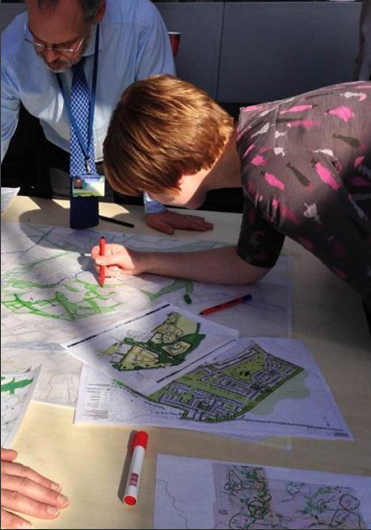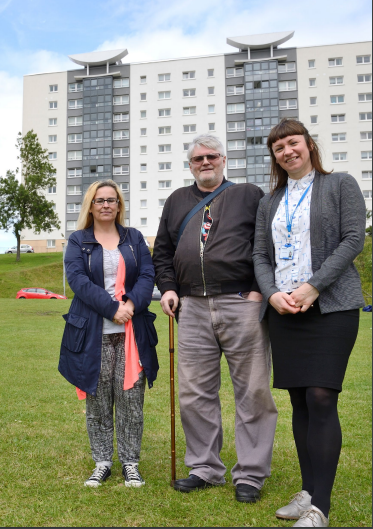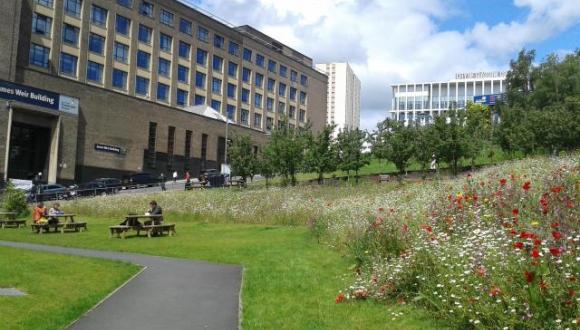The Place Principle - Our contribution to place-based working
Published: 2019
Overview
Place-based working is about delivering our services and using our resources based on the needs and challenges of particular localities and communities. By working more closely with communities and being more responsive to opportunities to work with others in this way, we will be more effective in delivering a range of positive outcomes that help connect people and nature.
In engaging in place-based working, our aim is to ensure that there is widespread understanding and use of nature-based solutions across Scotland. Nature-based solutions contribute to a range of environmental, social and economic outcomes and are essential in helping us respond to the climate emergency. By helping to embed nature-based solutions in place-based initiatives across Scotland we can help deliver successful places where people and nature can thrive.

Place-based working
Inclusive, healthy, empowered, resilient and safe places for people and communities are central to delivering Scotland’s National Outcomes and are a National Public Health Priority. The Place Principle, developed by Scottish Government and COSLA, recognises that places are shaped by the way resources, services and assets are directed and used by the people who live in and invest in them. Across the public sector there is a growing need for a more joined up, collaborative and participative approach to services, land and buildings, across all sectors within a place, to enable better outcomes and increase opportunities for people and communities to shape their own lives.
Placemaking
Placemaking is a place-based approach that includes the design, development, renewal or regeneration of our urban and rural built environment. The term ‘placemaking’ was originally used in relation to physical changes to the natural and built ‘fabric’ of a place. Increasingly however, it is used as a catch-all term for placed-based working, recognising that the way that people use and interact with a place, and with each other, is also key to its success.

|
Approach |
No clear vision |
Different visions |
Agreed vision |
Agreed vision – Skills and resources pooled |
|---|---|---|---|---|
|
Stakeholder action |
Curved arrows pointing different directions |
Arrows pointing in opposite direction |
Four separate arrows pointing forward |
One integrated arrow pointing forward |
|
Outcome |
Disorder and confusion |
Individual impact |
Coordinated impact |
Collective impact |
|
- |
Increasing collaboration and participation |
Increasing collaboration and participation |
Increasing collaboration and participation |
Increasing collaboration and participation |
The contribution of nature to successful places
The ‘green’ and ‘blue’ features of our natural and built environment and the range of essential services that nature provides are now widely recognised and valued as an essential component of successful places. By thinking of nature as ‘blue-green infrastructure’, we can use nature-based solutions to support the planning, design, delivery and good management of successful places where everyone can:
- Benefit more from nature: Nature provides opportunities for recreation, outdoor play and learning. It can contribute to regional and local distinctiveness and make a place more attractive for visitors and potential investors. Blue-green infrastructure can help prevent flooding, mitigate air and noise pollution and provide habitat for wildlife. Nature-rich places can help mitigate the impact of climate change.
- Connect with nature and lead healthier lives: The places we live in influence our health and wellbeing. Places with accessible and good quality greenspaces and active travel networks provide opportunities for physical activity and social interaction. Research shows that taking part in activities in nature-rich environments improves well-being and can help people who are suffering from poor health. Nature has a key role therefore in helping to tackle health inequalities.
- Contribute to looking after nature: Communities that have a sense of ownership of natural spaces and are empowered to make decisions about how they are managed are more likely to champion nature and the contribution it makes to our lives.

Delivering our place-based work
NatureScot is well-positioned to contribute and add value to place-based working across a range of scales, from national to regional to local. We will do by this by:
- helping to build and share the evidence of the multiple benefits of nature-rich places in our built environment.
- showcasing good practice in the delivery and management of multi-functional blue-green infrastructure and develop the capacity of others to use nature-based solutions to make great places.
- providing advice to support regional and national policies, strategies, development plans and investment plans, that influence how places are shaped.
- leading or supporting national projects or interventions, such as the ERDF Green Infrastructure Fund, the Learning in Local Greenspace project, the Vacant and Derelict Land Task Force and Green Health Partnerships. These will help to deliver low carbon places where the benefits of blue-green infrastructure are maximised and where there are more opportunities for people to connect with nature
- engaging in local place-based approaches such as urban renewal strategies, development frameworks, Locality Plans and Landscape Partnerships, using our local knowledge about the challenges and opportunities in particular localities and communities. Regional Spatial Strategies, Local Place Plans and Masterplan Consent Areas will provide further opportunities for us to demonstrate how nature can contribute to successful places.

To deliver this work, we will work with our key partners at different scales to meet the challenges of particular places and communities.
Our place-based work will be:
- responsive – we will listen to what communities tell us about the places they live, the challenges they face and their ambitions for the future
- proactive – we will work with others to embed the use of nature-based solutions in public and private sector thinking and practice across the range of NatureScot activity
- collaborative – we will work with a range of partners across the key sectors involved in place-making and other place-based approaches
- targeted – we will focus on geographical areas of greatest need where we can add most value, and where partners are willing to collaborate
- innovative – we will develop new thinking with others and share best practice
- flexible – we will seek and take advantage of new opportunities to work more closely with communities and other partners to deliver greater collective impact

Prioritising our work
We will work in strong partnerships with a range of local and national partners. However, we recognise that Place-based approaches require sustained effort and therefore we will focus on the places that will benefit most from our involvement. Our commitment to reducing inequality means a strong focus of our place-based work must be on areas of where there are opportunities to support better health and well-being outcomes. In line with our Climate Change Commitment we will look for opportunities to support low-carbon communities to adapt to the effects of climate change. We will also work with partners on ensuring that new development uses nature-based solutions to assist the transition to Net Zero and to promote resilience to climate change.

Measuring and demonstrating our impact
We will measure and demonstrate our impact by:
- Showcasing the best examples (at a range of scales and from a variety of locations) of where and how we have contributed to place-based working
- Highlighting examples of development and land use policies, plans, strategies and guidance at national, regional and local levels that reflect the importance of nature to making great places
- Monitoring and evaluating the impact of increased provision and use of accessible and well managed, good quality greenspace and paths in Scotland’s most disadvantaged areas
- Championing the use of nature-based solutions for tackling the economic, environmental, social and public health priorities of Community Planning Partnerships







